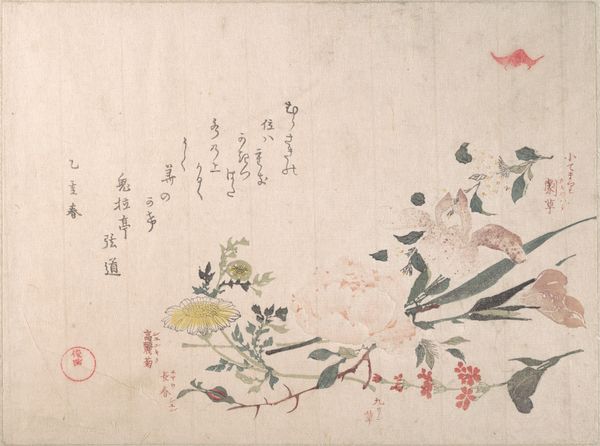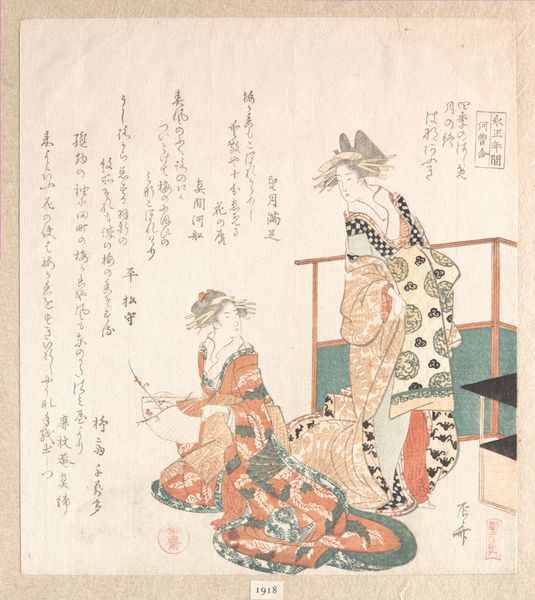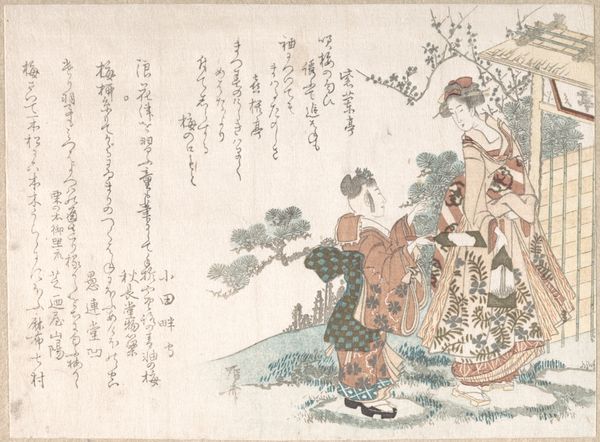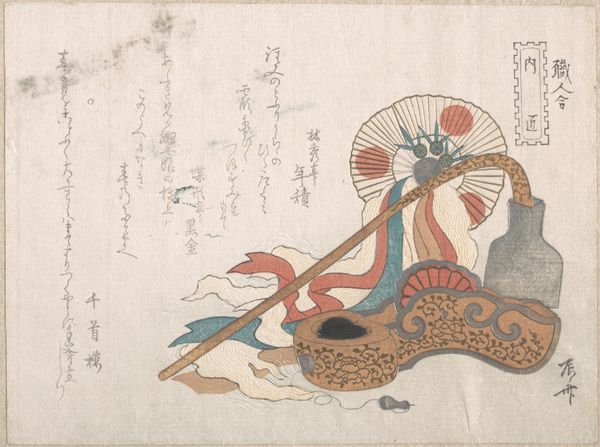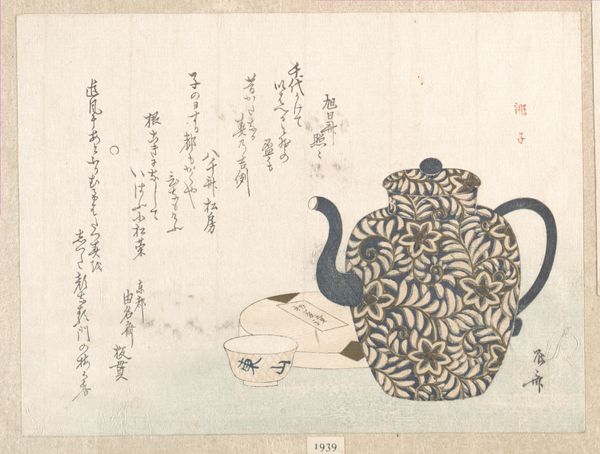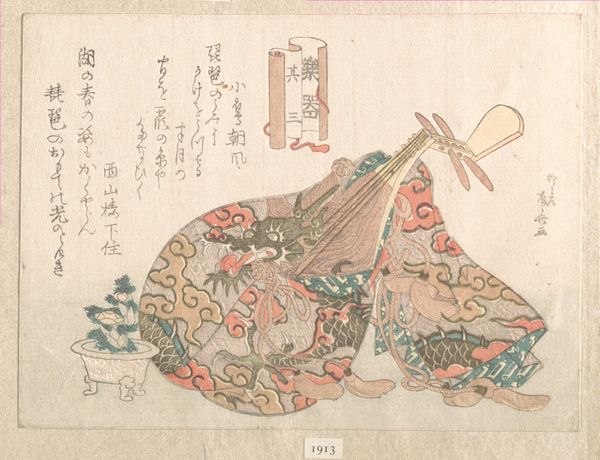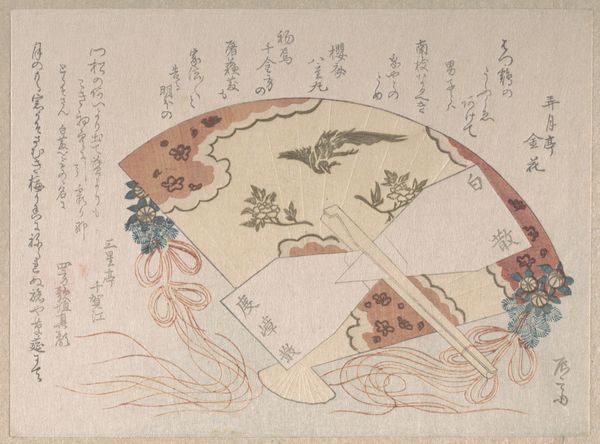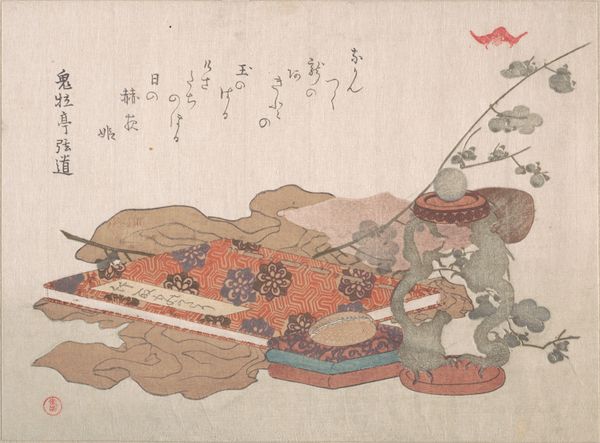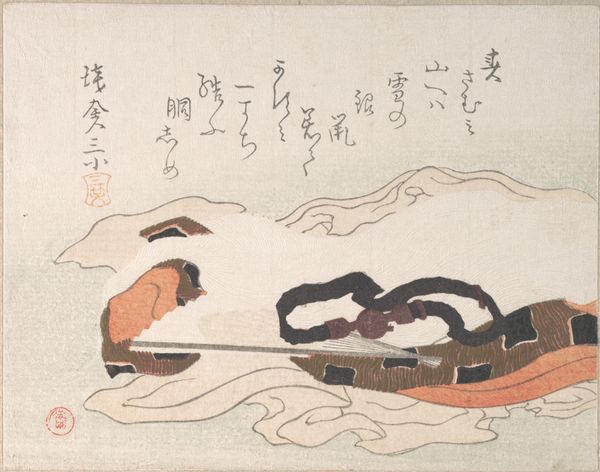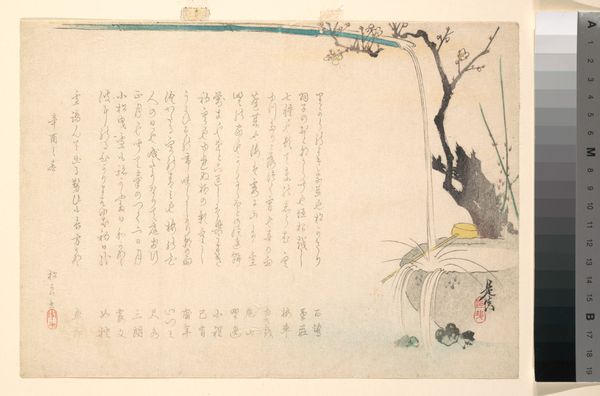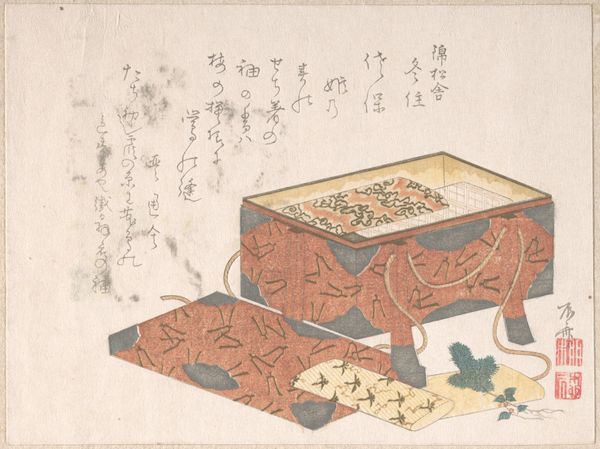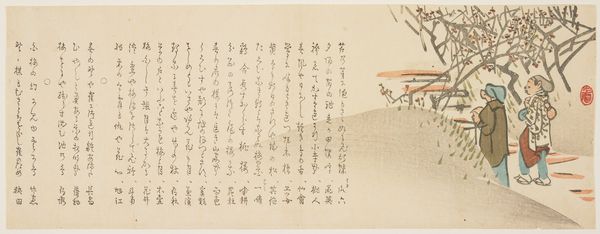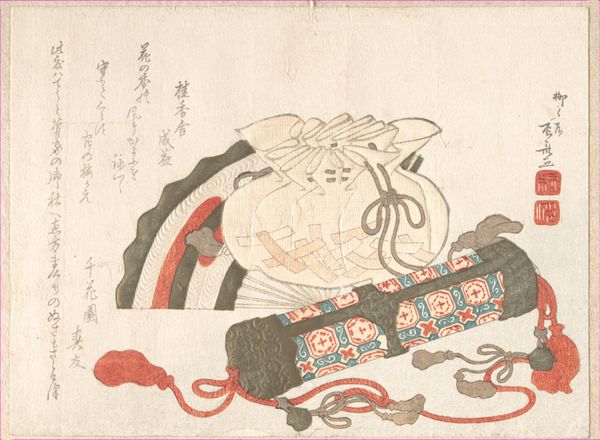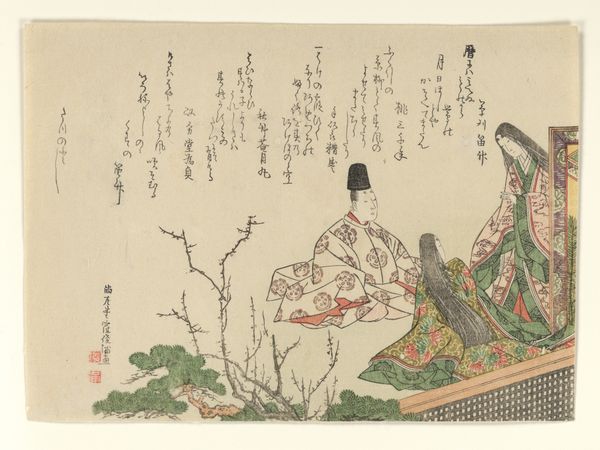
print, woodblock-print
# print
#
asian-art
#
ukiyo-e
#
woodblock-print
Dimensions: 5 3/8 x 7 3/4 in. (13.7 x 19.7 cm)
Copyright: Public Domain
Kubo Shunman created this woodblock print, "Shimadai and Sambo," in Japan, probably in the late eighteenth or early nineteenth century. The print depicts an elegant bonsai arrangement of pine, bamboo and plum, atop a highly stylized table. Beside it, a tray-topped stand holds a stone and a cloth, perhaps alluding to the tea ceremony. While seemingly a simple still life, the image speaks volumes about the culture of its time. Consider the rising merchant class of the Edo period, eager to emulate the refined tastes of the aristocracy. Objects like this print and the bonsai it depicts were likely status symbols, and the inscription, untranslated, hints at literary connections and classical learning. The print’s composition, with its flattened perspective and delicate lines, reflects the influence of Chinese art, itself a marker of cultural sophistication. To truly understand this artwork, we need to explore the social history of Edo-period Japan. Museum archives, historical texts, and studies of material culture would allow us to unlock the complex web of meanings embedded within this seemingly simple image.
Comments
No comments
Be the first to comment and join the conversation on the ultimate creative platform.
